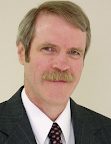
John R. Christy, PhD
Alabama State Climatologist
The University of Alabama in Huntsville
House Energy and Power Subcommittee
20 September 2012
For full text of testimony see here. & Full Hearing transcript here:
Selected Excerpts: To put it simply, Andreadis and Lettenmaier (2006) found that for the Midwest, “Droughts have, for the most part, become shorter, less frequent, less severe, and cover a smaller portion of the country over the last century.” In other words, droughts have always happened in the Midwest and they are not getting worse.
…
Another extreme metric is the all-time record high temperature for each state. The occurrence of the records by decade (Figure 1.1 below) makes it obvious that the 1930s were the most extreme decade and that since 1960, there have been more all-time cold records set than hot records in each decade. The clear evidence is that extreme high temperatures are not increasing in frequency. The recent claims about thousands of new record high temperatures were based on stations whose length-of-record could begin as recently as 1981, thus missing the many heat waves of the 20th century. So, any moderately hot day now will be publicized as setting records for these young stations because they were not operating in the 1930s.
…
About 75 percent of the states recorded their hottest temperature prior to 1955, and, over 50 percent of the states experienced their record cold temperatures after 1940. Overall, only a third of the records (hot or cold) have been set in the second half of the whole period. One could conclude, if they were so inclined, that the climate of the US is becoming less extreme because the occurrence of state extremes of hot and cold has diminished dramatically since 1955. Since 100 of anything appears to be a fairly large sample (2 values for each of 50 states), this on the surface seems a reasonable conclusion.
Then, one might look at the more recent record of extremes and learn that no state has achieved a record high temperature in the last 15 years (though one state has tied Energy and Power Subcommittee 16 John R. Christy, 20 September 2012 theirs.) However, five states have observed their all-time record low temperature in these past 15 years plus one tie. This includes last year’s record low of 31°F below zero in Oklahoma, breaking their previous record by a rather remarkable 4°F. If one were so inclined, one could conclude that the weather that people worry about (extreme cold) is getting worse in the US. (Note: this lowering of absolute cold temperature records is nowhere forecast in climate model projections, nor is a significant drop in the occurrence of extreme high temperature records.)
I am not using these statistics to prove the weather in the US is becoming less extreme and/or colder. My point is that extreme events are poor metrics to use for detecting climate change. Indeed, because of their rarity (by definition) using extreme events to bolster a claim about any type of climate change (warming or cooling) runs the risk of setting up the classic “non-falsifiable hypothesis.” For example, we were told by the IPCC that “milder winter temperatures will decrease heavy snowstorms” (TAR WG2, 15.2.4.1.2.4). After the winters of 2009-10 and 2010-11, we are told the opposite by advocates of the IPCC position, “Climate Change Makes Major Snowstorms More Likely” (http://www.ucsusa.org/news/press_release/climate-change-makes-snowstormsmore-likely-0506.html).
The non-falsifiable hypotheses can be stated this way, “whatever happens is consistent with my hypothesis.” In other words, there is no event that would “falsify” the hypothesis. As such, these assertions cannot be considered science or in anyway informative since the hypothesis’ fundamental prediction is “anything may happen.” In the example above if winters become milder or they become snowier, the non-falsifiable hypothesis stands. This is not science.
…
The evidence above suggests that climate models over-react to greenhouse gas increases. Also there is a lack of evidence to blame humans for an increase in extreme events. One cannot convict CO2 of causing any of these events, because they’ve happened in the past before CO2 levels rose.
…
There are innumerable types of events that can be defined as extreme events – so for the enterprising individual (unencumbered by the scientific method), weather statistics can supply an unlimited, target-rich environment in which to discover a “useful” extreme event. Thus, when the enterprising individual observes an unusual weather event, it may be tempting to define it as a once-for-all extreme metric to “prove” a point about climate change – even if the event was measured at a station with only 30 years of record. This works both ways with extremes.
#
Christy’s full testimony available here.
Related Links:
Climatologist Dr. John Christy: ‘I’ve often stated that climate science is a ‘murky’ science. We do not have laboratory methods of testing our hypotheses as many other sciences do’ — ‘As a result what passes for science includes, opinion, arguments-from-authority, dramatic press releases, and fuzzy notions of consensus generated by preselected groups. This is not science’
Climatologist Dr. John Christy: ‘Oil & other carbon-based energies are simply the affordable means by which we satisfy our true addictions – long life, good health, plentiful food…’‘…internet services, freedom of mobility, comfortable homes with heating, cooling, lighting and even colossal entertainment systems, and so on. Carbon energy has made these possible’


